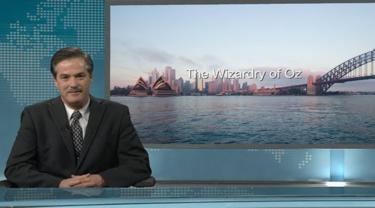Often known as the ‘Wonder Down Under’, Australia has captured the world’s imagination in recent decades as a small but mighty nation. The image of the fearless croc fighter in the back country has its parallel in stories of bold economic and trade promotion in some of the toughest locations. Is it all image, or is their any substance to the schtick?
Back in the 1980’s, there was not much difference between Australia and the rest. That was then; more recently, a gap has formed. Average OECD growth dipped to 2.7 per cent from 1992-2007, with Europe at 2.3 per cent, the US at 3.2 per cent and Canada, 3.1 per cent. Australia? Try average growth at 3.7 per cent. Compounded over this length of time, the difference is huge. How about the tough post-recession period? Australia is still managing superior growth. With Canada and the US at 2.1 per cent and Europe at 1.1 per cent, Australia averaged 2.6 per cent between 2010-16 – slower for them, but still superior.
What’s their secret? Australia’s trade intensity is less than Canada’s. Exports and imports only accounted for 30 per cent of the economy back in the late 1970s, likely a result of its distance from major markets. However, since then, that intensity is up about 33 per cent, now sitting at 40 per cent. Export growth has consistently outperformed the rest of the economy, averaging 5.1 per cent annually during the last, long growth cycle. However, instead of shrinking back in the lackluster post-recession years, Australian export growth actually increased to 5.4 per cent annually, flying in the face of the trend.
And the power behind this success? In a word, diversification. It was evident in the details of trade that something started to shift in the 1980’s. Late in the decade, growth in exports to the emerging world was 11 per cent annually, against 7 per cent to traditional OECD customers. (At the time, the OECD accounted for two-thirds of Australian exports). Growth to ASEAN nations was impressive, at an average annual clip of 13 per cent. But atop them all was China, at 15 per cent. Now, growth to ASEAN faltered, averaging just 3.6 per cent annually since. At the same time, OECD growth also swooned, to 2.7 per cent annually, and to an even slower 0.9 per cent in the post-recession period. But growth to China actually accelerated, rising to a scorching 17.7 annual pace in the stretch between 2000 and 2016, more recently ‘easing’ to 10 per cent.
This has revolutionized Australia’s export shares. OECD trade has shrunk to just 38 per cent of exports, while the developing world now grabs 66 per cent of what Australia ships abroad. Over this timeframe, shares to the ASEAN world have stayed constant at roughly 10 per cent. But while the US and Europe collectively account for just 8 per cent of Australia’s exports (formerly it was 20 per cent, evenly split), China has gone from a 3 per cent customer to a 32 per cent one. This is an enormous upheaval in a comparatively short span of time, and demonstrates that Australia’s aggressive marketing plans have been very effective.
What is Australia shipping? Recent numbers by industry are mixed. Weak steel processing in China has dampened coal exports, which were a dynamo during the last cycle. Chemicals and manufactured materials have been similarly laclustre in recent years. But at the same time, higher value-added manufactures have accelerated, crude materials are rising annually by 7 per cent and food – the export of the future, if not the past – is averaging 6 per cent growth annually.
Australia’s success is a lesson to small open economies the world over – it is possible to take on Goliath economies and succeed. With Australia an established developed Asian powerhouse, and promising to be one for some time now, it is one to watch. Canada’s footprint is growing there – it is the number one Asian destination for Canadian foreign direct investment. This growing presence is one of many reasons EDC is opening an office in Sydney this week. Supply chains of the region are integrated into the Australian market, and Canada is increasingly playing a role.
The bottom line?
In a world questioning trade, Australia is a classic example of a full-on exporting nation. All the more reason to do business with this small-open-economic powerhouse!





